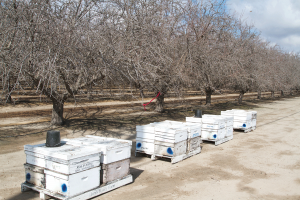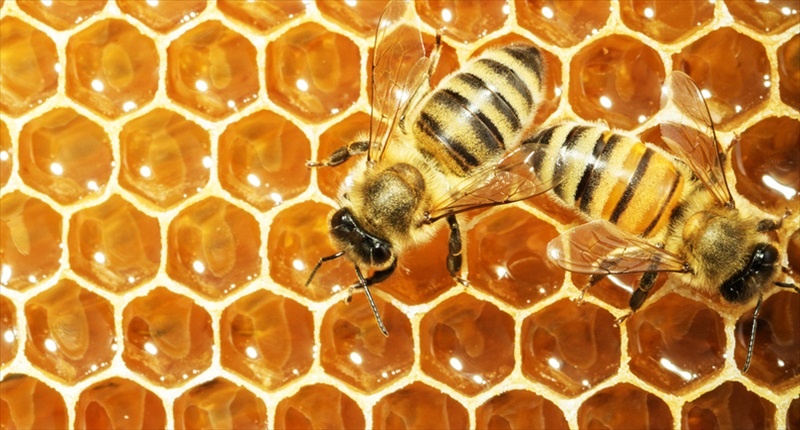 by- Jennifer Berry
by- Jennifer Berry
Even though it’s October as you peruse through this issue, it’s early August, right here, right now. Both the Republican and Democratic conventions have wrapped up, and the candidates have been chosen. Thankfully, it will be over soon. I think most will agree, campaign 2016 has been droning on for way too long. Actually, it began in 2015 when Ted Cruz announced his candidacy, only a mere 586 days before we would head to the voting booths this November. And, to make things even more tiresome, is the fact that the mud-slinging, that’s been going on for over a year, is accelerating with even more mud being slung. I mean, how can we possibly be told any more about how horrible the remaining two candidates are?
So, wouldn’t it be wonderful if Trump and Clinton decided to run a “nice” campaign? Think about it. Instead of all the negative ads bombarding us on a daily basis, filling the airwaves and cluttering our papers and mailboxes, they could elect to eliminate the insults and damaging comments. They would sit down together, say over lunch or a cup of tea, and calmly discuss their differences on key issues. They could engage in a quiet, low-keyed exchange on why they think their plans would work better for the country. No yelling, no finger pointing, no derogatory comments, no nasty tweets, and no “he said, she said” would be allowed. Words like liar, crooked, loser, dishonest, lunatic, obnoxious, devious, weak and thief would be deleted from speeches, websites, and headlines. Only soft-spoken, kind, thought-out comments would remain. Wow, wouldn’t that be wonderful, to actually have a debate without all the drama and name-calling? “Toto, I have a feeling we’re not in Kansas anymore.” Okay, back to reality and smack dab in the remaining months leading up to the craziest, political season ever. The war continues and passions are running high. Hopefully, this will be over come Tuesday, November 8th. (Oh, Lord, let’s just hope there aren’t any “hanging chads”!)
Not only can we be passionate about our beliefs, political or otherwise, we can also be passionate about our bees. I’ve never seen a knock-down, drag-out fight at a bee meeting or protests like we’ve seen at some recent campaign rallies, but I have seen some pretty heated debates. I’ve also read some intense exchanges over the net. I believe this is good as long as we are civil and can back up our statements with facts, not just emotional flim flam. We should be passionate about our bees because if we weren’t, they’d be in a lot more trouble than they are.
 One topic, however, that seems to divide beeks is the subject of treating our bees, especially for mites. “To treat or not to treat”? I guess you could say, I agree with both sides of this issue. There are times I believe, absolutely, 100%, that we need to treat our bees, and then there are other times, I believe that we don’t. One thing that beekeeping has taught me is this: you need to be fluid in your beekeeping practices. Rigidity and closed-mindedness will not work when it comes to keeping bees. Beekeeping methods will be different from day to day, week to week, month to month, and year to year. It will also be different from apiary to apiary, county to county, and state to state. So we need to listen and learn, not only from those with more experience than ourselves, but more importantly, from the bees!
One topic, however, that seems to divide beeks is the subject of treating our bees, especially for mites. “To treat or not to treat”? I guess you could say, I agree with both sides of this issue. There are times I believe, absolutely, 100%, that we need to treat our bees, and then there are other times, I believe that we don’t. One thing that beekeeping has taught me is this: you need to be fluid in your beekeeping practices. Rigidity and closed-mindedness will not work when it comes to keeping bees. Beekeeping methods will be different from day to day, week to week, month to month, and year to year. It will also be different from apiary to apiary, county to county, and state to state. So we need to listen and learn, not only from those with more experience than ourselves, but more importantly, from the bees!
One of my bee mentors once told me, “I let the bees tell me what I should be doing, not some book, not some person preaching on the internet, not some speaker touting their dogma at a bee meeting or on YouTube. I let the bees tell me, so, that way, it becomes about them and not about me.” I try to keep bees in this manner. Not on my terms but theirs. It’s not always easy, but beekeeping isn’t easy. Plus, something else I’ve realized over the years: the word “lazy” shouldn’t ever appear anywhere near the word “beekeeping”, especially if you want to keep your bees alive!
In my last article, I talked about how mites from collapsing colonies drift into neighboring colonies, causing those colonies issue. This is nothing new. Actually, Varroa migration and infestation rates have been researched for years both here and abroad. Let’s check out a few of those studies.
In order for a Varroa (parasite) to survive, it must be able to reproduce and then transmit to new colonies (host populations). Otherwise, if it’s unable to transmit, (say from hive to hive), then varroa would “burn out” once the host colony dies. Poof, extinction of the species! But that’s not the case where Varroa is concerned, unfortunately. Because honey bees drift from colony to colony and rob each other, they inadvertently transfer mites (and diseases) into other colonies. This is one reason why mites were able to spread so rapidly across the globe once they host shifted from Apis cerana to Apis mellifera.
Yet, there’s another reason as to why mites are able to spread so rapidly: it’s due to its ability to alter their host’s behavior, which favors their transmission. These host-parasite adaptations have been examined in many other arenas, but, just recently, Varroa and their influence on inter-colonial transmission was investigated. Forfert et al. (2015) revealed that colonies with high mite infestation loads not only had a significantly higher incidence of drifting, but they also had an increase in the acceptance of drifters. Good for the mite, bad for the bee!
There are several other studies that have investigated varroa transmission from colony to colony. One in particular, Frey and Rosenkranz (2014), explored how robbing and drifting significantly increased varroa invasion, especially in apiaries that contained a high density of colonies. Over a three and a half month period, colonies in the apiaries with a high density of bees had an invasion rate of 462 ± 74 mites per colony compared to those in low density apiaries, which only had 126 ± 16 mites per colony.
Another recently published work by Dynes et al. 2016 focused on genetic structure between populations of Varroa destructor and surprisingly found a degree of “within-colony” variation. Varroa mites are genetically very similar. The reason being that daughters of the foundress mite (mom) mate with their brother (son). Talk about inbreeding. So when colleagues at Emory University wanted to decipher the structure of varroa population genetics, they knew it would be tough. But this recent study did find differences in the mites, which suggests that horizontal transmission (movement between colonies) must be occurring in order to stir up the genetic mixtures. And this horizontal transmission is due to bees either drifting or robbing.
Okay. Makes sense. So what’s the big deal? Like I mentioned last month, when colonies are crashing from mites, usually in late Summer and early Fall, bees are evacuating, jumping ship with those mites and drifting into other colonies. Meanwhile, the surrounding colonies are taking advantage of these weakened colonies and, hence, start robbing them out, bringing their honey, pollen and mites back home. This just compounds the problem because the neighboring colonies are bombarded, very rapidly, with a huge influx of mites. This is called a Varroa bomb. Mites from crashing colonies or ones with high mite loads are infesting or re-infesting neighboring colonies. But wait, it gets worse. These invading varroa bombs may not even be coming from colonies within the same apiary but from apiaries up to a mile away or more. “Great! So now I have to worry about all the honey bee colonies within a 1-mile circumference?” YUP! Plus, if these colonies being invaded had been developing resistance/tolerance to their local family of mites, then KABOOM! They get inundated with a whole new group of mites, very rapidly, all at once; thus they may not have any defense and die.
Data collected from research confirms that mites from heavily infested colonies over 1.5 km (.98 miles) away are invading colonies, even ones previously treated (Frey et al. 2011). And to make matters even worse, the increased rate of mite invasion rises during nectar dearth periods due to increased robbing and drifting. Food sources become scarce, and bored forager bees increase their thievery attempts on other colonies. Nectar dearth periods usually occur during late summer or early fall (depending on where you live), which coincides with mite populations surpassing bee populations. Also, it’s during the time when bees need to be rearing Winter bees for the survival of the colony. Lots happening, none of which are good for the bees, is it?
 Let me switch gears here for a minute, but I promise it’ll make sense (well, at least in my mind it will). The Bee Informed Partnership has been collecting huge amounts of data for several years now. The data is primarily generated from survey information gathered from beekeepers (commercial, sideline and backyard). If you are interested in taking the survey or seeing some of the results, visit their website at https://beeinformed.org. They’re doing some really cool stuff!
Let me switch gears here for a minute, but I promise it’ll make sense (well, at least in my mind it will). The Bee Informed Partnership has been collecting huge amounts of data for several years now. The data is primarily generated from survey information gathered from beekeepers (commercial, sideline and backyard). If you are interested in taking the survey or seeing some of the results, visit their website at https://beeinformed.org. They’re doing some really cool stuff!
One bit of information reported on the BIP site is a comparison between average winter loss and operation size (backyard, sideline, or commercial). According to the data, backyard beekeepers lose more colonies than commercial beekeepers or sideliners. This makes sense, right? And it’s fair to say that most beginner beekeepers start out as backyard beekeepers. They didn’t just jump from one colony to owning 1,000 colonies overnight. And as beginners, they are more likely to lose colonies than someone more experienced. Yes? Not jumping on backyard beekeepers here. I was one – still am, actually! But for years I’ve heard how bad commercial beekeepers are for pouring all those chemicals and poisons onto the poor bees. Yet, their bees are surviving better than the backyarders’ or sideliners’ bees. Maybe chemical treatment as a concept isn’t so bad after all?
So, following that train of thought, treatment-free beekeepers are more likely to be backyard beekeepers than commercial. Commercial beekeepers can’t afford the risk of losing bees because they opted not to treat for mites. Plus, their Varroa management protocol usually includes treating twice a year and treating all the colonies at the same time. There’s something to glean from this.
Because of the BIP data, the evidence from numerous research projects and hands-on experience, we (the UGA Bee Lab and myself) are shifting our approach in controlling Varroa. In years past, we said to only treat those colonies that have reached the economic threshold (ET). Now, we say it’s imperative to treat all colonies, simultaneously, during late summer before the winter bees are being reared, even if only one colony has reached the ET. Again, research has shown that even moderate varroa infestation rates in the fall can significantly increase the risk of a colony to crash and burn during the winter. This is because varroa and the viruses present negatively affects the health and longevity of Winter bees.
 One more thing to consider: our bees may not be as isolated as we think. Since it is not mandatory that beekeepers register their hives, we may not know how many colonies are behind that fence next door, or over that ridge, or down that road. And in recent years, beekeeping has become more and more popular, adding to the overall pool of colonies. Plus, the number of migratory bees traversing the states each year is mind blowing. According to statistics derived from USDA (2014), there are approximately 36,000 migratory beekeeping operations in the U.S., which accounts for three million individual colonies. These large-scale operations move hundreds/thousands of colonies at a time over thousands of miles each year. This movement of bees is driven by crop pollination contracts, such as the almond industry, which requires 1.4 million migratory colonies to pollinate the one-half million acres of nuts. Then, after the almond flowers are pollinated and begin to fall to the ground, these bees (and mites) are either moved to new locations for more pollinating work, shook into packages, or split into nucs. Afterward, they are sold and shipped across the US and set up in your neck of the woods. That isolated apiary doesn’t feel so isolated anymore. And those mite-free colonies may no longer be mite free.
One more thing to consider: our bees may not be as isolated as we think. Since it is not mandatory that beekeepers register their hives, we may not know how many colonies are behind that fence next door, or over that ridge, or down that road. And in recent years, beekeeping has become more and more popular, adding to the overall pool of colonies. Plus, the number of migratory bees traversing the states each year is mind blowing. According to statistics derived from USDA (2014), there are approximately 36,000 migratory beekeeping operations in the U.S., which accounts for three million individual colonies. These large-scale operations move hundreds/thousands of colonies at a time over thousands of miles each year. This movement of bees is driven by crop pollination contracts, such as the almond industry, which requires 1.4 million migratory colonies to pollinate the one-half million acres of nuts. Then, after the almond flowers are pollinated and begin to fall to the ground, these bees (and mites) are either moved to new locations for more pollinating work, shook into packages, or split into nucs. Afterward, they are sold and shipped across the US and set up in your neck of the woods. That isolated apiary doesn’t feel so isolated anymore. And those mite-free colonies may no longer be mite free.
When I first started keeping bees, I fought against using any kind of chemical treatment in my colonies. My thought was, it must be harmful to put an insecticide into a box of insects. But, over time, I began to realize that the environment that we have created for our bees – by the introduction of exotic parasites and pests, a myriad of toxins, and the reduction of forage acres – is causing them to suffer. So, like I mentioned at the beginning, I do believe in using treatments when mite populations are high. Sorry to be Debbie Downer here, but we must adopt a solid, realistic, tried and true varroa management plan to keep our bees alive. Letting bees die from Varroa because we assume those bees are genetically inferior is not fair to the bees. Once, I heard, “If the bees die, then good riddance to bad genes.” This is not the answer. Their dying may not have anything to do with “bad genes” and everything to do with the environment that we’ve inflicted upon them.
We treat our animals for parasites, we treat ourselves (or our children) when we are sick. And if you really think about it, by using soaps, detergents and other cleansers (even organic ones), we treat our bodies, clothes, dishes, floors, sinks, and counters with chemicals each and every day. The words “chemical” or “treatment” have gotten a bad rap over the decades (and for good reason in some cases). But even organic farmers use chemicals. Oils and soaps are chemical treatments as well, just not synthetically derived! So what do we do?
If you are a treatment-free beekeeper or planning to become one, I hope you are using some sort of method to keep mite populations down. And if the mite loads do reach damaging levels, especially late in the year, I also hope you take the necessary actions to save the bees, which may mean using a treatment (and not just letting nature take its course). But the discussion still remains: if we use treatments, it can be hard on the bees and hard on their environment. Yes, it can be, especially if we don’t follow directions. And yes, we may be killing off all sorts of microorganisms in the hive or in the gut of the bee. But what’s worse: a few thousand microbes dying, or a few thousand bees or colonies dying due to mites biting and chewing on them and amplifying viruses? And just like when we take an antibiotic, we end up killing off a whole host of “good” bacteria, but we are also killing off the bad bacteria that may be killing us off. So, how about we just say, treatment-reduced? That way we aren’t stuck in a box that offers no solution to save our bees when they are in need. And that’s the point, isn’t it?
Look, not one bit of mud slung here, but I have to add a final thought, one resembling the political jargon splattering the airwaves right here, right now. We will be STRONGER TOGETHER, and it’ll be HUGE, if we just PUT OUR BEES FIRST! BELIEVE ME when I say, if you just VOTE FOR ME, then all our PROBLEMS WILL BEE SOLVED, and we’ll live happily ever after. Right, Toto? Happy voting! Thankfully, it’s only a month away. But first, take care of you and your bees!
Jennifer Berry is the Research Leader at the UGA Bee Lab and beekeeper
and queen producer.









